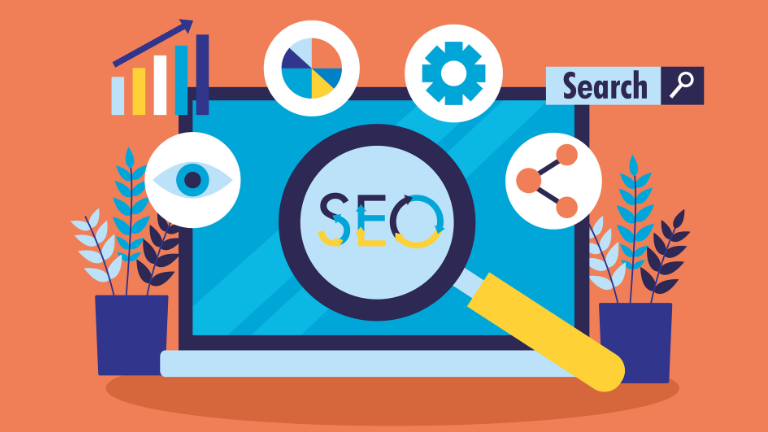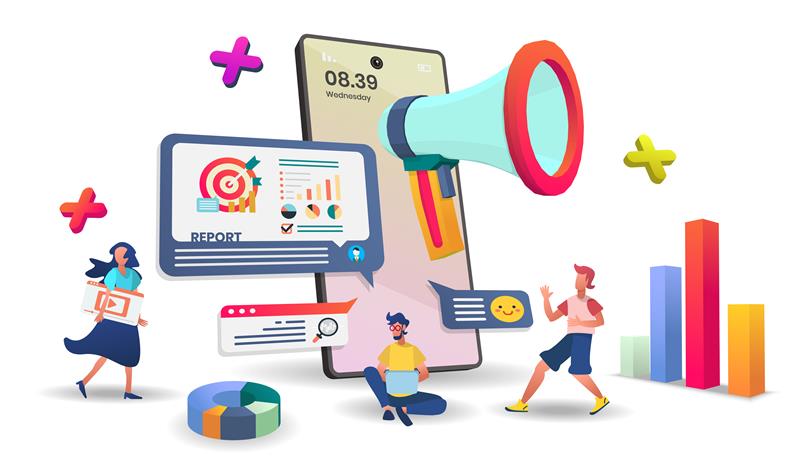In today’s digital age, the way consumers interact with a brand has drastically changed. Consumers are no longer limited to a single channel of communication with a brand, and they expect a seamless experience across all channels.
This is where omnichannel marketing comes in. It allows brands to interact with their consumers through multiple channels and create a consistent message across all touchpoints.
In this blog post, we will discuss the strategies to implement omnichannel marketing and how Gyaata Solutions can help your brand create a strong identity and customer experience.
What is Omnichannel Marketing and Why is it Important?
Omnichannel marketing is a strategy that involves interacting with consumers through multiple channels such as email, social media, website, physical stores, mobile apps, and more. The aim of omnichannel marketing is to provide a consistent and personalized experience to consumers, regardless of the channel they use to interact with the brand.
Omnichannel marketing is important because it can increase customer engagement, improve customer satisfaction, and ultimately drive revenue. According to a study by Aberdeen Group, companies with strong omnichannel strategies retain 89% of their customers, compared to 33% for companies with weak strategies.
DID YOU KNOW?
- 64% of consumers expect to receive a personalized experience across all channels.
- 55% of consumers prefer to shop with brands that offer multiple channels of communication.
- 62% of consumers who engage with a brand through multiple channels make a purchase.
- Brands with strong omnichannel strategies have an 89% customer retention rate, compared to 33% for brands with weak strategies.
Strategies to Implement Omnichannel Marketing
-
Utilize Multiple Channels of Communication
To implement omnichannel marketing, it is important to use multiple channels of communication, including email, social media, website, physical stores, mobile apps, and more.
-
Integrate all your Channels
Integrating all your channels with one another can help in creating a seamless experience for your consumers. For example, you can use data collected from your website to personalize the email campaigns that you send to your customers.
-
Keep your Messaging Consistent Across Channels
Providing a consistent message across all channels can help reinforce your brand’s identity and make it easier for consumers to recognize and remember your brand.
-
Use Automated Processes to Interact with Customers
Automated processes such as chatbots can help you interact with your customers in real-time, regardless of the channel they are using. This can help improve customer satisfaction and increase engagement.
-
Monitor and Analyze Your Data regularly
Monitoring and analyzing your data can help you identify which channels are most effective for your brand and where you should invest your resources.
Integrating Performance Marketing Across all your Channels to Create a Seamless Experience
As a business, you understand the importance of performance marketing in driving conversions and sales. However, integrating performance marketing across all your channels can be challenging. With the increasing number of channels available to businesses today, it can be tough to create a seamless experience that meets your customers’ needs. Let’s discuss some best practices for integrating performance marketing across all your channels.
-
Define Your Customer Journey
The first step in integrating performance marketing across all your channels is to define your customer journey. Understanding your customer journey can help you identify the touchpoints where you can deliver the most value. Mapping out the customer journey involves identifying the channels that customers use to interact with your brand, the touchpoints where they are most likely to convert, and the metrics you will use to measure success.
-
Choose the Right Channels
Once you have mapped out your customer journey, you need to choose the right channels to reach your customers. Depending on your target audience and the products or services you offer, some channels may be more effective than others. For example, if your target audience is predominantly active on social media, you may want to focus on social media marketing. Alternatively, if your customers are more likely to use search engines, you may want to invest in search engine optimization (SEO) and search engine marketing (SEM).
-
Develop a Consistent Brand Voice
Creating a consistent brand voice is crucial for integrating performance marketing across all your channels. Your brand voice should reflect your brand’s personality, values, and goals. It should also be consistent across all your channels to create a seamless experience for your customers. By developing a consistent brand voice, you can build trust with your customers and create a sense of familiarity that will make them more likely to engage with your brand.
-
Use Data to Drive Performance
Data is essential in measuring the success of your performance marketing efforts. By tracking key metrics across all your channels, you can identify which channels and touchpoints are most effective at driving conversions and sales. You can also use data to make informed decisions about where to allocate your marketing budget and which campaigns to optimize. By leveraging data, you can continually improve your performance marketing efforts and create a better experience for your customers.
-
Test and Optimize Continuously
Finally, to ensure that you are integrating performance marketing across all your channels successfully, you need to test and optimize continuously. By testing and optimizing your campaigns regularly, you can identify areas for improvement and make the necessary changes to improve your results. By adopting a continuous improvement approach, you can stay ahead of the competition and create a better experience for your customers.
By following these best practices, you can create a seamless experience for your customers that drives conversions and sales. Remember to define your customer journey, choose the right channels, develop a consistent brand voice, use data to drive performance, and test and optimize continuously.
Implement Customized Omnichannel Marketing Strategies with Gyaata
Gyaata Solutions specializes in omnichannel marketing and can help your brand create a strong identity and customer experience. Our team of experts can help you implement omnichannel marketing strategies that are tailored to your brand’s needs and goals. We use a data-driven approach to identify the most effective channels for your brand and optimize your campaigns to drive revenue.
In conclusion, omnichannel marketing has become an essential strategy for brands looking to create a seamless connection with their consumers across multiple touchpoints. By offering a consistent and personalized experience, brands can not only increase customer loyalty but also drive revenue growth and achieve a competitive edge.
With the right tools and approach, omnichannel marketing can help brands unlock a treasure trove of insights and opportunities to engage with consumers in meaningful ways. In today’s fast-paced and ever-evolving marketplace, investing in omnichannel marketing is no longer an option but a necessity for brands looking to thrive and succeed.












